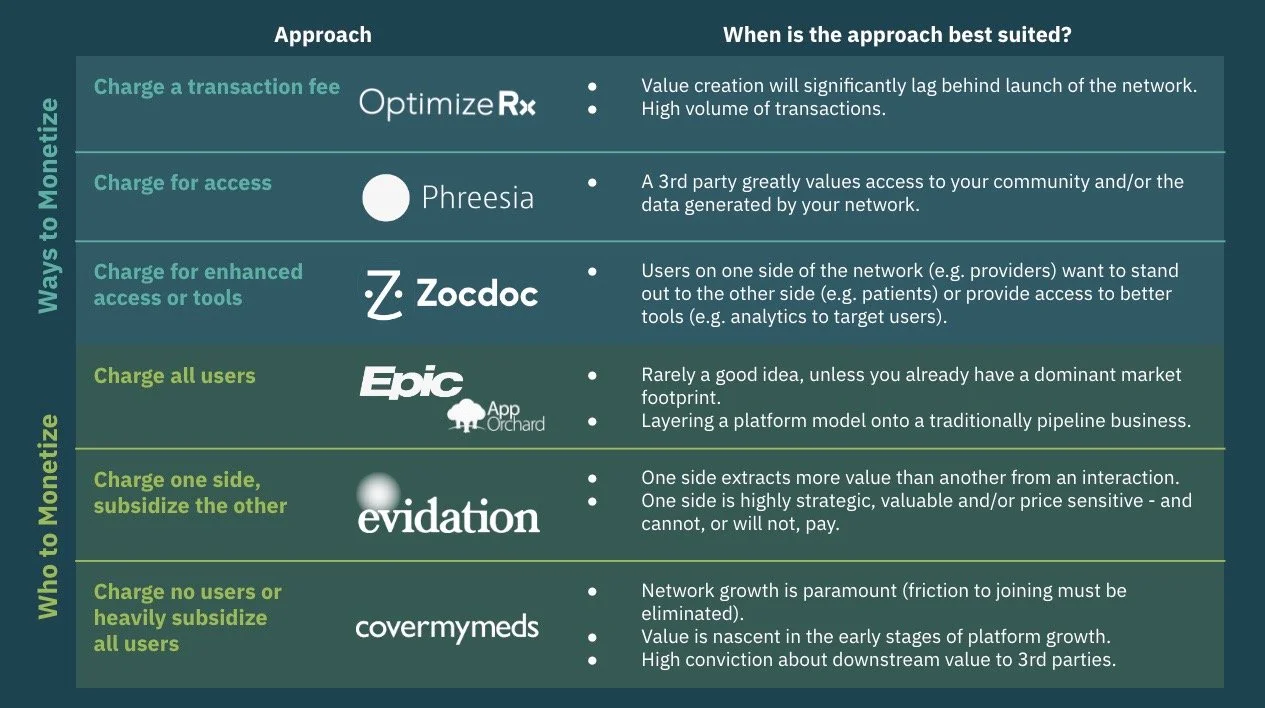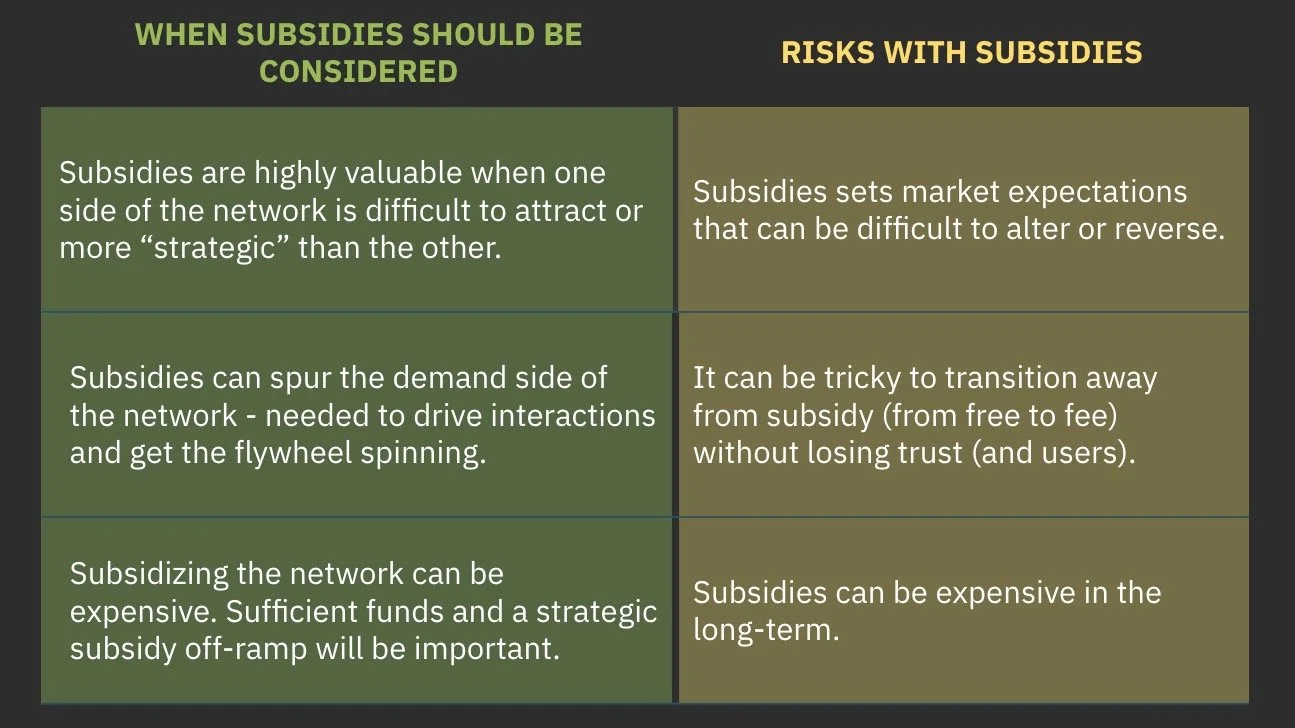The Art and Science of Monetizing a Digital Health Platform
Digital health platform companies grow faster and are more profitable than pure software companies, but they also face unique monetization challenges.
In this blog, we’ll cover some of the questions we get most often when it comes to monetizing a platform in healthcare, including:
Why are platform models more scalable and lucrative than SaaS models?
How do you determine which side of the network to charge?
Should you use subsidies to accelerate growth of the network?
How do you design a model that actually reflects the value you create?
If you need help developing or refining your monetization strategy to better scale your business, we’d love to chat. Please reach out to Summit Health Advisors.
ALIGNING INCENTIVES & VALUE: Why are platform models more scalable and lucrative than SaaS models?
The ultimate advantage of a platform business model, as opposed to a SaaS model, is that it benefits from network effects. As the network grows, revenue and unit economics grow exponentially, rather than linearly.
Traditional, healthcare SaaS approaches can often inhibit rapid, organic software adoption and utilization. Typical SaaS pricing structures - such as per user or per bed models - can discourage adoption and utilization, as customers are penalized (charged more) for adding new users or increasing transactions. Further, with SaaS fees typically paid upfront (annually or monthly), the cost of the technology is disconnected from its value creation, as a customer pays regardless of how much the solution is used or the outcomes it facilitates - making ROI indirect and illusive.
With a platform model, the community of users on the network should be incentivized to contribute to network effects: increasing adoption, utilization and monetization of the platform. A platform model can be better aligned with customer value through the advantages of pricing temporality, proportionality, attributability.
Temporality: Fees can be charged at the time of value creation (e.g. only when a transaction is completed, such as booking a doctor’s visit).
Proportionality: Fees can be tied to the value received by the user (e.g. a percentage of the financial value created by the transaction, such as a percentage of a reimbursement rate).
Attributability: Fees can be charged to the users who extract the greatest excess value from the network (e.g. as a pharmacist is financially compensated for filling an e-prescription, they are more likely to tolerate being charged).
The unparalleled monetary alignment that platform models enable means that all parties - users on the network and the platform provider - are incentivized towards the same behaviors, namely driving value creation through increased adoption, utilization and/or monetization.
IDENTIFYING EXCESS VALUE: How do you determine which side of the network to charge?
It is critical to determine which side (or sides) of the network reap the most economic benefit from a successful platform interaction, thus receiving the greatest “excess value.”
The side of the network receiving the greatest “excess value” is typically easiest to monetize, but this can be hard to determine in healthcare, as complex payment structures, incentives and motivations mean multiple sides of the network can simultaneously realize financial benefits (e.g. claims reveneve, cost control, operational efficiencies and reputation growth).
Below is an introductory framework to demonstrate how a handful of digital health companies have approached monetizing their networks.
ACCELERATING NETWORK EFFECTS: Should you use subsidies to accelerate growth of the network?
In short, yes, almost always. Given that the chief economic driver and source of value for a platform is its network, spurring growth early on should be a top priority. Although subsidies are just one, albeit very powerful, way to help unlock adoption or utilization. The table below presents some considerations to weigh when thinking about the use of subsidies for your platform business.
MAPPING THE VALUE CURVE: How do you design a model that reflects the value you facilitate?
In healthcare, traditionally constrained budgets and risk-aversion means platforms must demonstrate clear value-for-money and return-on-investment to be adopted at a system level. This can be difficult when value is dependent on the size of the network - often creating a “value gap” in the early stages of growing a network and a “value excess” once you’ve scaled the network.
Being mindful of the Value Curve, and successfully plotting your monetization strategy along it, can help you generate early revenue (without completely obstructing adoption), while not shortchanging your value creation in the later stages of growth.
If you’ve found any of these insights helpful or need help figuring out the right monetization strategy for your platform business, Summit Health Advisors is here to help. If you’d like to chat, please reach out.
Download your copy of Building Network Effects-Driven Platforms in Healthcare: A Guidebook for Digital Health Startups here.




